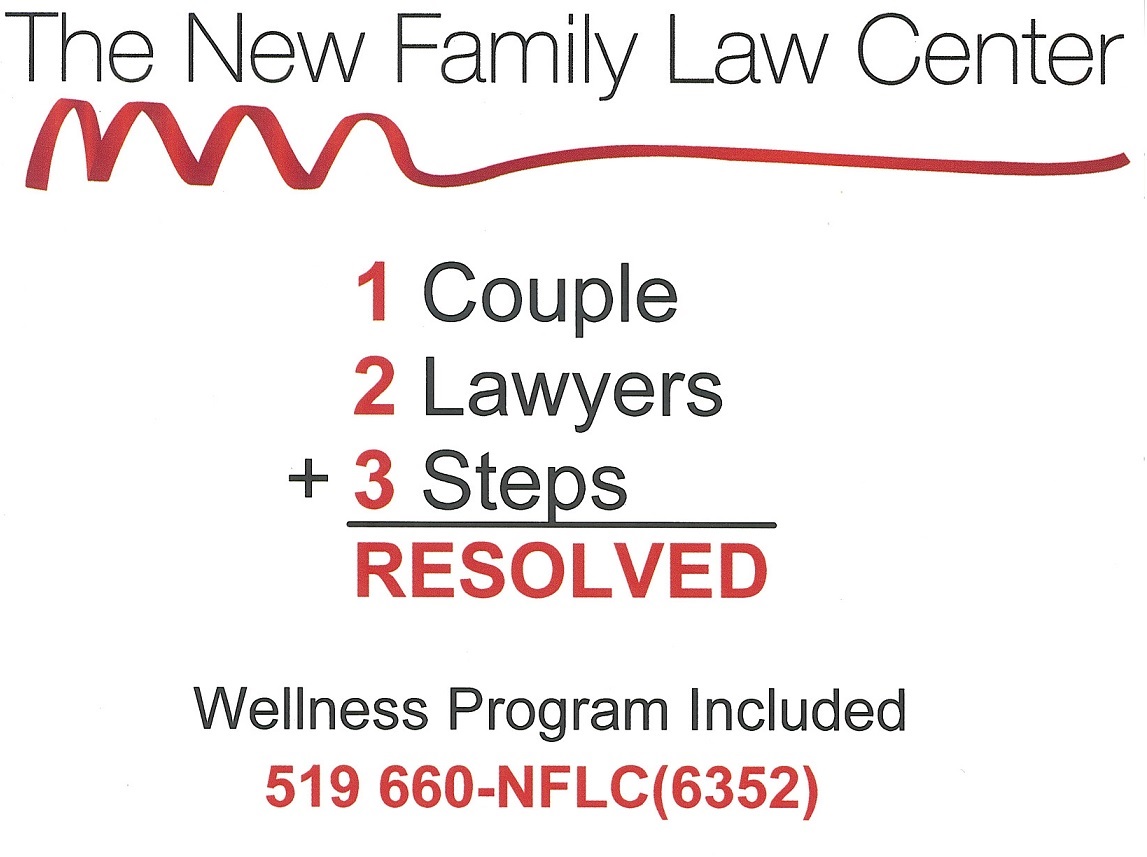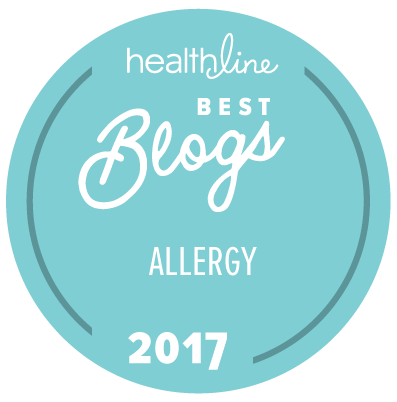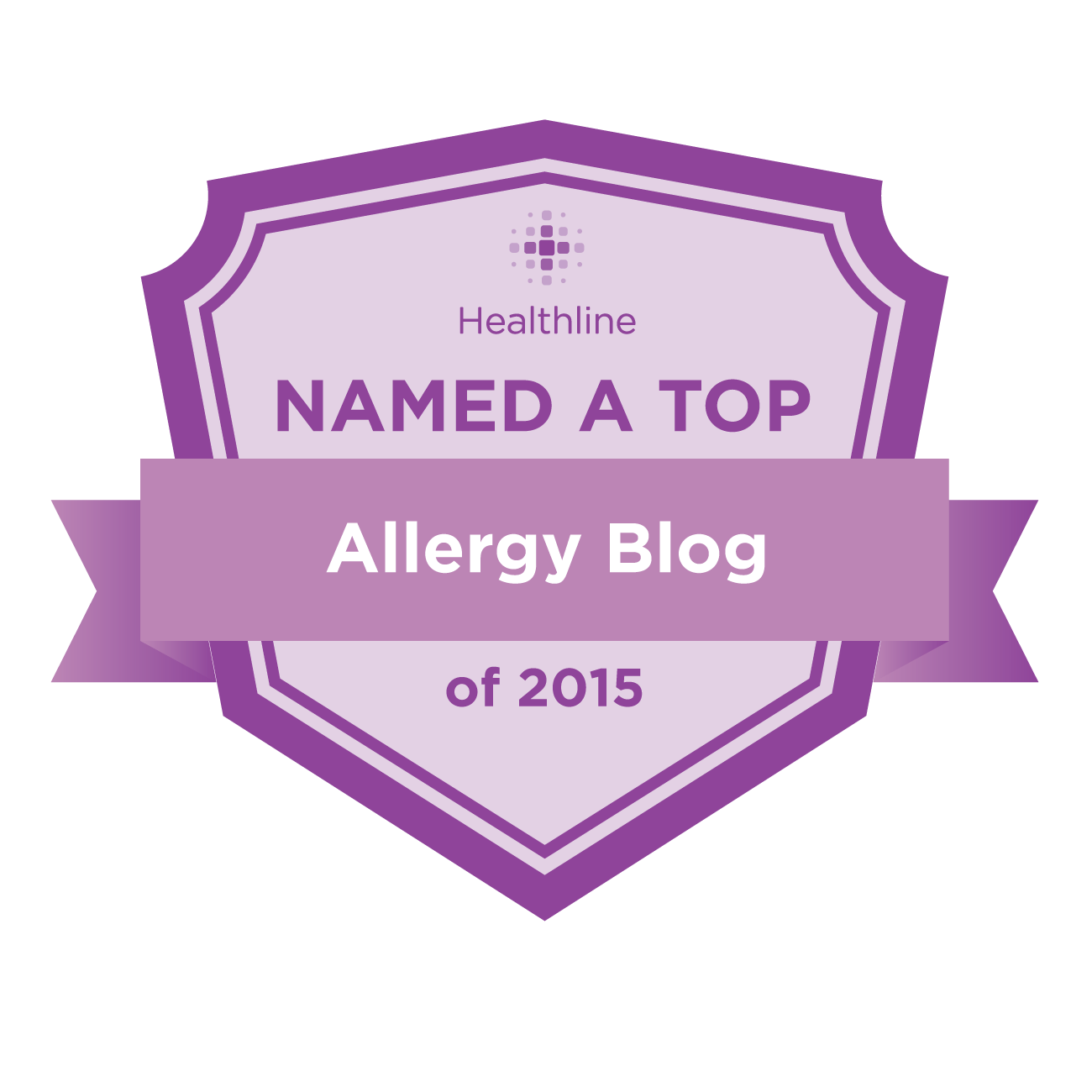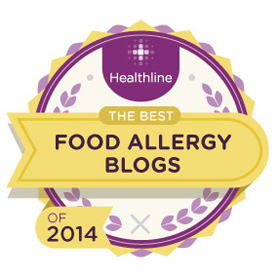As many of my readers know, I live in Ontario, Canada, which I believe is the heart of food allergy and anaphylaxis safety protocols for Canada and the rest of the world. This is due to the work of Sara Shannon, mother of Sabrina Shannon, a child who unfortunately died at age 13 from a severe allergic reaction. As her daughter lay dying, Sara pledged to make school life safer for students with food allergies, and the result is Ontario legislation that is elegant in its simplicity and which inspired similar legislation throughout Canada and some of the United States.
Sabrina’s Law is set out in the legislation’s explanatory notes as follows:
The Bill requires that every school board establish and maintain an anaphylactic policy, which must include, among other things, strategies to reduce risk of exposure to anaphylactic causative agents, a communication plan for the dissemination of information on life-threatening allergies, regular training on dealing with life-threatening allergies, a requirement that every school principal develop an individual plan for each pupil who has an anaphylactic allergy and a requirement that every school principal maintain a file for each anaphylactic pupil.
The individual plan for a pupil with an anaphylactic allergy must include details on the type of allergy, monitoring and avoidance strategies and appropriate treatment, a readily accessible emergency procedure for the pupil and storage for epinephrine auto-injectors, where necessary.
Employees of a board may be preauthorized to administer medication or supervise a pupil while the pupil takes medication in response to an anaphylactic reaction, if the school has up-to-date treatment information and the consent of the parent, guardian or pupil. If an employee has reason to believe that a pupil is experiencing an anaphylactic reaction, the employee may administer an epinephrine auto-injector or other medication that is prescribed, even if there is no preauthorisation to do so.
The Bill provides that no actions for damages shall be instituted respecting any act done in good faith or for any neglect or default in good faith in response to an anaphylactic reaction, unless the damages are the result of an employee’s gross negligence. The Bill preserves common law duties.
Click here for the full text of Sabrina’s Law, 2005.
Although Sabrina died from exposure to milk protein, by having a good look at risk of exposure to allergens in school, many Canadian schools became peanut and nut free. This is due to huge numbers of people allergic to peanuts or tree nuts (about 1/4 people with food allergies), how highly allergenic they are (1/8000 of a peanut can cause a reaction), and how difficult the oily residue is to clean off surfaces. You can read a scientific study about how to properly clean off peanut butter and all traces of its residue by clicking here.
Canadian schools are careful not to say they “ban” peanuts and nuts, since they don’t want to imply that there are no traces of nuts on site, and they don’t want to need to inspect school lunches to police this. They do successfully create what I call a “traces of nuts” environment. People no longer bring peanut butter sandwiches to school or Snickers bars, or anything else that clearly contains nuts. Labels are read on packages, and any item that says “may contain traces of nuts” is to be enjoyed at home and not consumed at school. With a large school population, snacks with traces of nuts inevitably do enter the school, although a very close eye is kept on classrooms that have allergic students. Should those snacks be brought into class, they’d likely be noticed and sent home every time in those rooms.
When school wide allergy policies are adopted, the parent population becomes used to these precautions, and it becomes normal for everyone. The recent picketing of parents in Florida regarding precautions put in place in one classroom for one grade one student demonstrates that a safe environment can’t be created one classroom at a time and only when there happens to be an allergic student in the class. Classroom parents feel imposed upon, they don’t understand why they suddenly need to change their normal lunch and snack packing routines, the allergic child is subject to unbearable scrutiny, and an adversarial situation can develop.
In addition to excellent legislation, what we’ve also done right here in Canada is to adopt precautions to protect peanut and tree nut allergic children everywhere they go. Since schools have excellent policies in place, so do many summer camps, restaurants, and children’s sports organizations. It becomes normal to consider the safety of a snack sent along for the soccer team to enjoy and to see a notice from the team coach advising of team mates’ allergies. You can’t get to this level of compliance and tolerance introducing allergy policies in class rooms on a case by case basis.
I truly don’t understand why the Food Allergy and Anaphylaxis Network (FAAN) and its Canadian counterpart, Anaphylaxis Canada, don’t recommend school wide peanut allergy safety as the best policy. There is no reason to preserve peanut butter and jelly sandwiches in school lunches, when there are lots of other safe, healthful, and inexpensive choices to send. I could not let my son sit in a room with someone eating peanut butter or engage in class activities with students who just ate it: The risk of exposure is simply too high, and when I hear the statement that restricting it creates a “false sense of security”, my blood boils.
Nut safe school wide policies in no way create a false sense of security; instead, they reduce a “true sense of danger”. School administrators and allergy parents know that a “nut free” school cannot be policed and insured 100%. The school still should strive to be “nut safe”, to limit the allergen and create an environment that’s safer and manageable for teachers, staff, and allergic students.
This article on the ACAAI website by Allergist Dr. Jeffrey Miller clearly confirms that anaphylaxis (life threatening allergic shock) can occur from substances on the skin: “When trying to determine the cause of an anaphylactic reaction, physicians and patients generally consider substances that had been ingested or injected, but may fail to consider agents that had been applied to the skin. However, the systemic absorption of many topically applied substances is well known, and in fact is used as the drug delivery system of choice (via transdermal patches) for such items as nicotine, scopolamine, and hormone replacement therapy. It must therefore be remembered that any topical application that is capable of causing systemic absorption is also capable of provoking systemic IgE mediated allergy—and not just cell-mediated contact dermatitis.” To read Dr. Miller’s full article, click here.
It really is much safer not to bring peanuts or nut products in packed lunches or in food brought into the classroom for sharing during snack time or class celebrations. There were two recent tragedies in classrooms from food allergies. On 28 January 2011 Rehan Butt age 7, suffered two episodes of full cardiac arrest after a substitute teacher handed him a chocolate with a hazelnut inside it. The chocolates had been brought to the classroom by a classmate’s parent to share with the class to celebrate her child’s birthday. Despite receiving an EpiPen injection within 10 minutes, Rehan had a severe allergic reaction and was rushed to hospital and hooked up to a ventilator to help him breathe. His allergy was well known to staff at his school, which he’d attended for 3 years.
Another tragedy occurred on December 17, 2010 in a Chicago grade 7 class room. Katelyn Carlson, age 13, had a known peanut allergy as did another classmate. To celebrate the last day of school before Christmas Break, the teacher decided to order in Chinese food from a restaurant, and called ahead to ask that they not use peanuts. One peanut allergic child ate the food and was fine. Katelyn began to have trouble breathing from trace amounts of peanut protein in the food, and she did not have an EpiPen prescribed to her. She waited 15 minutes for emergency crews to arrive while receiving c.p.r., and within hours she was dead.
With the cooperation of parents of all students, tragedies like these can be avoided. It is in the best interests of each school’s allergic students, the teachers and staff who supervise them, and the rest of the students to help them avoid tragic mistakes and the horrific events that can follow them.
At my son’s school, we were recently faced with a challenge by a very small number of parents (two) who wanted to bring peanuts and nuts back into the school, not only in their children’s lunches but also in food to be shared by the entire class, as long as they are clearly labeled. They requested time before the Parent School Council to make submissions, I was called in as an expert parent, as was a nurse from our health unit. After hearing submissions, reviewing the legislation, and looking at our old policies, the school principal prepared revised policies, and I was well pleased.
Our new school policy can be viewed by clicking here, which provides that peanuts and tree nuts, even in trace amounts, still are not to be brought into school. All communication on allergy issues is to come from the principal for consistency and clarity, parents of all students now have to sign this authorization form to allow their children to eat food brought in for sharing (he feels a huge number of parents will opt out), and there are provisions to handle other allergens like latex as needed. My hope is that sharing this policy will help improve the safety of all school children with allergies.
* If you found this post helpful, I would love for you to use the “Sharing Is Caring” bar (below) to share this post via Facebook or Twitter. If you’re reading this as an e-mail message, you need to jump over to my blog first by clicking here.









@Soni, how much time do you really spend looking for peanut-free products? 15 minutes per month? An hour? How much more money are you spending exactly? Really, I would like to know. Do you know how much time and money I would gladly give to provide my child with one hour per month where she could be free of food allergies? You should thank your lucky stars that your son can enjoy a carefree childhood.
Now that my food allergic son is in public school, I recognize that food allergies are particularly difficult for school-age children because of peer pressure and their desire to be just like everyone else…
School policies that are more respectful of allergens mean that my son (who already has a lot of problems with social integration) would not have to be singled out and forced to sit at a table all by himself (undoubtedly setting him up as a social pariah).
I know how emotive this subject is, being mum to a 6 year old with multiple allergies, and my own son’s primary (elementary) school is very good.
I was going to suggest we try educating people as ignorant as Soni who make ridiculous complaints like this, and I too scoff at the time taken to choose a cheese sandwich over a peanut one compared with hours of label scrutiny and in comforting children who just want one treat that they daren’t .
But I don’t know if it would do any good. Perhaps likening it to passive smoking would help, except instead of killing people over many years it can kill instantly? You can’t teach people compassion. Sadly.
Comments like Soni’s just make me cry. How can another parent be so insensitive regarding the safety of another child? What if it were her child that could die from ingesting a food that they are severely allergic to? I’m sure she would want every possible precaution taken to protect her child.
My daughter had her first reaction just shy of 2.5 years. Then another, even worse reaction 9 months later. She has ‘just’ turned 4 and we are constantly teaching her about her allergies.
She has to miss out on so much in life in general……..how inconvenient for Soni’s child to have to miss out on eating nut products at school :insert sarcasm:.
If we eat out at a restaurant for lunch or dinner, she gets a sandwich packed for her from home.
If we go to a party, she gets her own lunch box packed from home.
At daycare I have to go through the daily menu before leaving and read recipes and product labels to ensure what they are feeding the children that day is safe for her.
If my phone rings on the days that she is at daycare, my heart races and I momentarily freak out thinking something has happened.
Soni, maybe you should live a week in the shoes of a parent whose child could die from ingesting the wrong food. Maybe you should have to jab an epipen into your child’s leg and ring the ambulance and pray that it is enough to save your child…………..maybe then you might understand what it is like and maybe then you may change your tune?
I would love for the ‘small inconvenience’ of not being able to pack nut products for school lunches. How easy that would be compared to having to worry about your child every single day of their life, hoping and praying that their anaphylaxis never takes their life.
Soni, you should be ashamed of yourself 🙁
Elizabeth – What a great article! I wish we could see more of this awareness in the states too.
As for the other insensitive comment, we all know how time consuming it is to find safe food. Those of us with children who have food allergies do this for every meal. The only difference between us and those without food allergies, is that it is not just an inconvenience, it is a matter of life and death.
Additionally, even though “the world is not peanut free,” when our children are older and enter a room full of peanut products, they can get up and walk away. In a school environment, they cannot get up and leave.
Elizabeth — Wonderful piece, beautifully written as always. You are a true asset to the foid allergy community!
Soni — Imagine the following. At the age of 15 months, your child is diagnosed with a life-threatening disease. You are told matter-of-factly by the doctor that there is no treatment, no cure, and the condition is likely to be life-long. Any parent can understand how horrible this would feel. Now imagine that the trigger for a fatal reaction in this disease is invisible and ever-present in daily life. Every second of every day must be lived on high alert in order to preserve your child’s life. Your child will never enjoy countless childhood pleasures, like visiting an ice cream parlor or attending a baseball game, because doing so could literally cost him his life. It is impossible to understand until you’ve lived it, but I sincerely hope that the next time you’re “inconvenienced”, you’ll be thankful that the inconvenience is very minor, and that your own child can lead a normal life.
As a teacher of young children, I thought I had a pretty good handle on food allergies when dealing with my food allergic students in the classroom. However, I realized that I had no real clue until my own daughter had her first severe allergic reaction and her body became covered in hives, her eyes became watery, she began to cough and cry and I panicked as other parents helped me get her to the ER where she received medicine that luckily saved her. Since then I have had to adminster an epi pen on her little 5 year old leg and hold her as we waited for the ambulance to arrive. We still do not know what caused her mouth to swell. We do now know that she has many food allergies, peanut being her worst, but also a latex allergy, chemical allergies and animal allergies. I have watched my extremely outgoing child become a nervous, anxious child who is afraid to eat anything unless I check it first. She can’t even wash her hands in a public restroom because of the chemicals in most soaps. She cries when she sees a balloon at birthday party because a balloon popping was what caused her first ER visit. She has taken on a huge responsibilty to make sure she stays safe. She has learned not to accept any food from anyone, she has learned to constantly wash her hands, she has learned that if her Grandmother has eaten peanut butter before coming to her house, then Grandma can not kiss her. She has learned she can’t leave the house without her epi pen, benadryl, her inhaler, her special soap, etc. She has learned more about allergies in her 6 1/2 years of life then I ever had to learn. Luckily, through my beautiful daughter, I have learned that every child has something. Whether they are allergic to peanut butter, whether they have Autism, whether they are in a wheelchair, they are all children who deserve to learn in a safe and secure atmosphere when they are in school. If it were not for my child’s food allergies, I may not be as educated about allergies as I now am and I can now use my education to help others become more aware of allergies so we can keep these kids safe so we don’t lose more of our precious children.
@Soni-It is a very callous attitude to have about these children. Most of these children are very young and you cannot get them to understand or “take responsibility for there(sic) allergy”, as they have no real comprehension of life and death matters like an anaphylactic reaction being fatal for them. They also cannot “take responsibility for there(sic) allergy” when school administrations do not allow these young children to carry their Epi-pens on their person, nor would most of them be capable to administer or know when to use their Epi-pen. They rely on responsible adults to take care of them and keep them safe. They do not wake up and think, I could die today. One of my sons nearly did die from a reaction and all it took was one ignorant, misinformed individual to nearly kill him. The school became hypervigilant, but almost at the cost of his life. It doesn’t matter how many are killed from lightning or food allergies. ONE IS TOO MANY. Just ask any parent whose son or daughter has died from a reaction.
@Soni, I agree with the above comments. My daughter has multiple food allergies. I am so unbelieveably tired of hearing uneducated people such as yourself complain about the inconveniece of not being able to throw together a pb and j sandwich for school. I would love to have the opportunity to have someone with views like yours come into my home for a week. To see what we go through, that every label has to be checked and rechecked, to call every company to see if they have failed to declare possible cross contaminations. To see my child handle a toy in Walmart and then suffer wheeze, swelling anf hives because some thoughtless parent has given their child a peanut product while shopping and the residue has been left behind! My daughter recently suffered a very serious reaction from a few sips of Gatorade. I was distracted by my 2 year old having a temper tantrum and missed the tiny (soy) under the vegetable oil. I was riddled with guilt as I frantically drove her to the ER and then had to give her steroids and ventolin and antihystamines for days. She missed 4 days of school because I got distracted. You know what is the worst part of living in a world like ours? It’s not just the constant anxiety about food, it’s not just seeing your normally healthy vibrant child suddenly become so sick or even the constant wonder, will today be the day? Will I get a phone call from the school that she’s just been given her epi pen, that she’s in an ambulance by herself on the way to the ER? will she make it? No, none of that is worse than feeling the way people like you make us feel. Nothing is worse than thinking someone like you will be a teacher or a parent who thinks we’re making it up. I pray that you didn’t just read a blog leave a rediculous comment and will never return to see our responses to you! I pray you will read each and every one of our remarks and see how many of us there are! and perhaps realize that you are wrong!
Hey Soni the money you spend on school lunches are still cheaper than the coffin my daughter will need once she has a deadly reaction.
I wanted to add…I also teach him how to read labels so that he’ll know how to do it for himself.
Comments like Soni’s sadden me. Soni experiences frustration at being inconvenienced by having to find alternate food choices? How about being “inconvenienced” by having a child that has 6 different food allergies, having to read each and every label that comes into your home because your child gets hives from the slightest contact with his or her allergen (not safe to kiss your child if you have eaten something they are allergic to hours prior), and having to spend hundreds of dollars a month on special foods, medicines and doctors visits. How about being “inconvenienced” by having to inject your child with epinephrine and call the paramedics as you watch your child’s eyes swelling shut and hear them gasping for breath as his or her throat closes off due to a trace amount of food allergen that had gotten on their own safe lunch (via contamination from another child’s lunch). How about having to pray EACH AND EVERY
These people that say these kids should “take responsibility” for their allergy…How on earth is a toddler or elementary age child supposed to keep themselves safe? Are parents of allergic children supposed to keep them home forever? Don’t these children deserve a safe environment in which to learn just like everyone else?
Soni I would view this as an opportunity to teach your child compassion for others. These opportunities are priceless.
Ok, one last thing. This for me is not only about life and death. I do not want my daughter to be traumatized by me having to inject her with an epipen (medicine used to stop anaphalactic symptoms that lead to death). If you research the side effects of this you will see it is not something that is pleasant and I’m sure would be very horrifying for my child to experience. Not to mention the ambulance ride and overnight in the ER. That is a much more common occurence statisticly.
@Soni-We DO TEACH our children. I am always reminding my son not to eat food I have not approved, not to touch others food, to wash his hands before he eats, not to put his fingers in/near his mouth (we have so far been lucky to only have ingestion reactions and not contact ones). You have to understand that it takes time to learn, and also understand that children who do not suffer don’t understand and some (hopefully very few) that actually use their food that is unsafe to bully children with food allergies. I know it’s a pain for you to look and an inconvenience…don’t you think it is for us too but we HAVE TO DO IT everyday to keep our children safe and alive. I pray you never ever have to deal with a food allergy personally, but they can strike at anytime. You or your children or anyone else could eat a peanut butter sandwich today and tomorrow become allergic (or fish, wheat, milk, anything). I will continue to educate my child on avoidance and how to be prepared to deal with his allergy, but he’s 7, so he still needs people to look out for him too. He is still a kid after all. Just like we prepare our kids to grow up and move out and be productive adults, allergy parents prepare their children for a world that isn’t always looking out for them so they can look out for themselves so they can stay alive and do what they can to live a normal productive life as well.
@Soni, it’s interesting that you are frustrated in looking/paying for peanut-free products. Think about how that affects those of us who are feeding an allergic child!
You don’t seem to have much compassion for other people’s children; I’m sorry that the possibility of you causing my child’s death doesn’t seem to mean much to you. For your sake, I hope the other adults in your child’s life have more compassion for your child than you seem to have for others.
Just to add one more thing to my previous comments, I do teach my child everday about her allergy. I have to see the dissapointment in her eyes when we can’t go to a party because they are serving unsafe foods or when she can’t have a certain treat she wants to try. My daughter is only 3 but she already knows she is allergic to peanuts. If someone tries to give her food she sometimes asks if it has peanuts in it (she only just turned 3). It is an ongoing process and I fully expect that she will be ready to take care of her self when she is a bit older but my problem is when she is in elementary school. I’m not sure how old sonis child is but I’m sorry, a 1st grader is just not old enough to make all of the right decisions to protect themselves. There are crossing guards up to 8th grade I believe. I think she will be fine before then but I am just making a point.
As a parent of a child with a life threatening peanut allergy the very first thing that came to mind after reading the comment posted by soni is that I pray your child never becomes allergic to peanuts but I also feel that is the only way you could truly understand. Maybe if that were to happen you would understand the worry and absolute fear us parents have to live with on a daily basis. Yes, there are statistics (although yours are a bit inaccurate) but I don’t want my child to become one. The fact that you are told your child could DIE if she comes in contact with a peanut (not just eating but touching as well) and that this worry will be there forever and then you see the point of view of individuals who do not understand makes me even more afraid. We can’t be with our children every second while they are in school. We have to rely on the belief that within each human being there is a certain amount of compassion and human decency that would compell us all to want to lend a helping hand or take care of one another in a way we would all want to be taken care of and treated. We understand that this places an unfair burden on those parents and children who do not have this problem but we ask that you take a minute to stop and think how this affects us and how much you can make a difference in someones life. By simply having your child wait until they are home to eat certain foods, that act could potentially save my childs life. Have you ever wondered how it would feel to lose your child? I have to everyday. The worst part is that it is something so ridiculous and beyond our control. Even if I took every precaution, read every food label and homeschooled my daughter there are still 25% of labels that omit the fact that they contain peanuts. All we are trying to do is protect our children the same as anyone else. My child is just as precious to me and yours is to you. We didn’t ask for this to happen and we did nothing to create this problem. Peanuts to us in school are no different than how you would feel if my child brought a loaded gun to show and tell. It’s not a good feeling when your life is a contant game of Russian Roulette. All we are asking is to help keep the odds alittle more on our side. I would also ask that you research peanut allergies on the internet if you haven’t already. Foodallergy.org is a great source of information on allergies as well as anaphalaxis which is what could happen that would possibly take our precious daughter from us forever.
@soni – Sorry, your comparison is not a very good one. If you stand out in a lightning storm you may or may not get hit by lightning and die. But the choice is yours and hopefully your death will be instantaneous.
Food allergic kids have no choice. In the cases sighted above they didn’t see the food that might kill them so they did not have the choice of avoidance. By the way, death by anaphylaxis is not instantaneous, nor pain or fear free as the person in question is choked to death by his/her own body!
I would hazard a guess that you would complain about the expense and inconvenience if your child took nuts to school, caused a death and then had to have counselling to get over watching the trauma.
I have to say i do not agree. I am frustrated as a parent to have to spend time and more money looking for peanut free product. We need to teach the children that suffer from this allergy to take care of it because the world is not peanut free. Did you also forget that food allergy kills about as many people as lightening? Don’t think i am insensitive and do not care for these children i just want people to take responsibility for there allergy, I just want to be able to send my son to school with a lunch that as peanuts in it and not worried that it will be confiscated, especially since his school as one child, not in his class that suffer from this allergy.
I agree that Ontario’s Sabrina’s Law is a good one, but unfortunately parents are still subject to significant variations in each school depending on the principal. Teachers and parents. I thought you might be interested to know that we at the Ottawa Anaphlaxis Support Group (OASG) were able to lobby our school board in Ottawa for 3 key changes to the allergy policy last year:
Every reasonable attempt will be made to ensure that all students with anaphylaxis:
· are supervised during lunch breaks by a trained adult; (previously they were supervised by grade 5-6 students)
· are accommodated inclusively at lunch breaks;
· are not provided any food by staff without their parents prior permission.
Here is a link to an article I wrote about it for Allergic Living magazine: http://allergicliving.com/index.php/2010/09/01/the-lunch-patrol/
Here is a link to the new OCDSB policy: http://www.ocdsb.ca/ab-ocdsb/p-n-p/Policies%20and%20Procedures/P%20108%20SCO%20GeneralMed.pdf